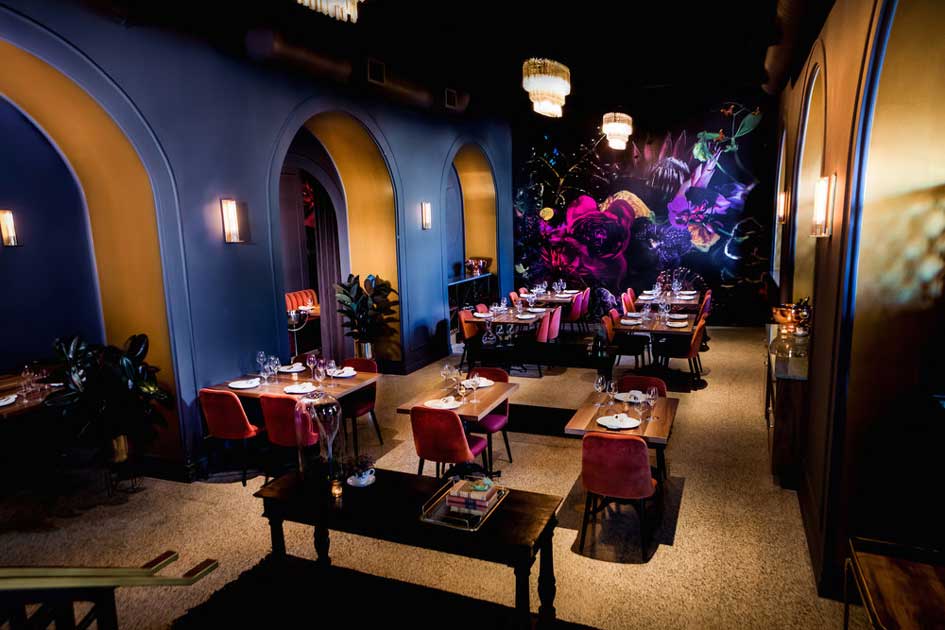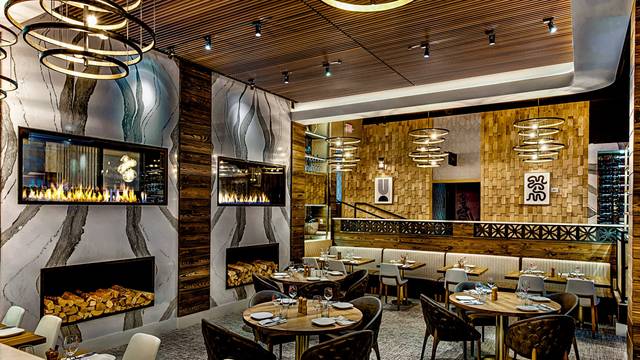Savor Genuine Eastern Cuisine With a Pan-Asian Twist for a Culinary Adventure
Embarking on a culinary journey through authentic Oriental food, enhanced with a Pan-Asian spin, provides a special chance to explore the abundant tapestry of flavors that specify the area's diverse culinary traditions. As you ponder these enticing recipes, consider the social stories and historic influences that form them, each bite using a tale waiting to be found. Fine dining experience Islamabad.

Discovering Pan-Asian Tastes
In the realm of worldwide gastronomy, Pan-Asian food attracts attention for its impressive diversity and the unified interaction of tastes from different Oriental cultures. This cooking technique commemorates the rich traditions and unique components located across the continent, producing a tapestry of tastes that is both enjoyable and intriguing. Secret to Pan-Asian food is its capability to balance different flavors-- wonderful, salty, spicy, and sour-- while highlighting the quality and quality of each component.
From the umami-rich soy sauce of Japan to the intense chili peppers of Thailand, Pan-Asian cuisine supplies a substantial combination of flavors. These aspects are usually incorporated in inventive ways, enhancing recipes with layers of complexity. For example, the use of aromatic herbs such as lemongrass and cilantro, common in Vietnamese and Thai food, includes a refreshing illumination to recipes, while the incorporation of coconut milk provides a velvety, abundant appearance.
The focus on fresh fruit and vegetables and fragrant spices guarantees that each meal is not just a feast for the taste however likewise for the senses. Pan-Asian cuisine invites diners to embark on a culinary trip, discovering the vast and varied landscapes of Asian gastronomy with every bite.
Blend Dishes to Attempt
While Pan-Asian food is commemorated for its typical tastes, the modern-day cooking landscape is progressively accepting combination recipes that blend these classic elements with impacts from other areas. This ingenious approach not just honors the abundant heritage of Eastern cookeries however additionally presents novel preference experiences that appeal to modern tastes buds.
A prime example of such a blend dish is the Korean-Mexican taco, where seasoned bulgogi beef is wrapped in a warm tortilla, covered with kimchi and a zesty gochujang-infused salsa. This mix marries the bold, savory flavors of Korea with the vibrant, fresh components of Mexican cuisine. Similarly, sushi burritos have actually gained popularity, integrating the fragile artistry of Japanese sushi with the passionate, hand-held ease of a burrito, commonly featuring combination ingredients like tempura shrimp and avocado with a drizzle of wasabi mayo.
One more notable meal is Thai curry ramen, which infuses the velvety, fragrant seasonings of Thai curry into the calming brew of typical Japanese ramen, producing a harmonious blend that tantalizes the detects. These blend dishes extend beyond mere uniqueness; they represent a cooking dialogue between cultures, urging expedition and development on the planet of Pan-Asian cuisine.
Necessary Active Ingredients and Seasonings
To really value Pan-Asian food, one must recognize the essential active ingredients and seasonings that create its structure. This varied culinary style attracts from a rich tapestry of Asian practices, using an unified mix of structures and tastes.
Aromatic elements are crucial, with lemongrass, ginger, and garlic being common throughout different Pan-Asian recipes. These ingredients supply a fragrant base that enhances the complexity of tastes. Seasonings such as celebrity anise, cardamom, and cinnamon introduce heat and character, echoing influences from areas like China and India.

Food Preparation Techniques and Tips
Grasping the art of Pan-Asian cuisine needs experience with its distinctive cooking strategies, each adding to the vibrant tapestry of flavors this cooking tradition is celebrated for. Central to these methods is the stir-fry, a fast cooking strategy that preserves the dietary honesty and vivid colors of active ingredients. Utilizing a frying pan, the stir-fry technique permits for also navigate here warm distribution, crucial for achieving the characteristic texture and taste equilibrium of Pan-Asian recipes.
Another basic strategy is steaming, specifically prevalent in Chinese cuisine. This gentle technique maintains the all-natural flavors and nutrients of ingredients, making it ideal for seafood and veggies. Dumplings, a cherished staple, usually profit from steaming, leading to soft, succulent textures.
Grilling, likewise important, passes on smoky midsts to recipes such as Korean bulgogi or Japanese yakitori (Fine dining experience Islamabad). This technique commonly includes marinading ingredients, permitting tastes to pass through deeply prior to food preparation over an open flame or hot plate
Finally, mastering the art of balancing flavors-- wonderful, sour, salty, bitter, and umami-- is crucial. Properly layering these aspects can raise a recipe from normal to extraordinary, using a complicated and satisfying cooking experience that embodies the essence of Pan-Asian food.
Dining Experiences Worldwide
Across the world, Pan-Asian cuisine offers an unrivaled eating experience, commemorated for its rich tapestry find here of flavors and lively discussions. This cooking sensation has actually gone beyond cultural boundaries, catching the hearts and tastes of food lovers worldwide. In multicultural cities like New York, London, and Sydney, Pan-Asian restaurants work as melting pots where cooking customs from Thailand, Japan, China, and past converge, supplying diners with a diverse mix of meals that highlight the region's diversity.
The worldwide appeal of Pan-Asian food hinges on its capacity to use both credibility and technology. Cooks masterfully wed traditional active ingredients such as lemongrass, soy sauce, and miso with contemporary methods, leading to meals that are both refreshingly brand-new and acquainted. This combination enables restaurants to start a cooking trip that values heritage while accepting modernity.
Moreover, eating experiences are boosted with attentively created atmospheres that show the ethos of Pan-Asian looks. From minimalist Japanese-inspired interiors to bar and grill near me vibrant Thai-themed spaces, each dining establishment offers an one-of-a-kind atmosphere that matches the culinary offerings. Therefore, clients are not merely eating a meal but partaking in a cultural experience, making Pan-Asian eating a really international phenomenon.
Verdict
The exploration of Pan-Asian food offers a profound understanding of the detailed interplay of flavors and culinary practices across Asia. By welcoming blend meals such as Thai curry ramen and sushi burritos, the cooking journey not just highlights the flexibility of standard ingredients however also showcases innovative contemporary methods. This gastronomic journey, improved by cooking techniques and essential spices, offers an one-of-a-kind chance to value the cultural diversity and cooking virtuosity that specify Pan-Asian food on a global range.
Beginning on a culinary journey with authentic Oriental cuisine, enhanced with a Pan-Asian spin, uses an one-of-a-kind possibility to explore the rich tapestry of flavors that define the area's varied culinary practices.In the world of international gastronomy, Pan-Asian cuisine stands out for its amazing variety and the unified interaction of flavors from numerous Asian cultures. Secret to Pan-Asian cuisine is its capability to balance different flavors-- sweet, salted, spicy, and sour-- while highlighting the freshness and high quality of each ingredient.
